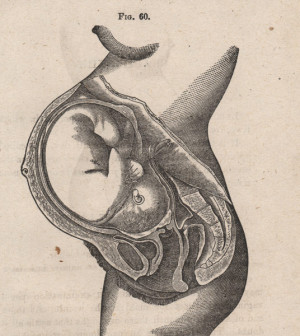- Skip Storing This Everyday Product in the Fridge Door
- Green Tea + B3 Pairing May Boost Brain Health
- Navigating Your Midlife Crisis: Embracing New Possibilities
- City Raccoons Showing Signs of Domestication
- Mapping the Exposome: Science Broadens Focus to Environmental Disease Triggers
- One Week Less on Social Media Linked to Better Mental Health
- Your Brain Changes in Stages as You Age, Study Finds
- Some Suicide Victims Show No Typical Warning Signs, Study Finds
- ByHeart Formula Faces Lawsuits After Babies Sickened With Botulism
- Switch to Vegan Diet Could Cut Your Greenhouse Gas Emissions in Half
U.S. Birth Rate Records First Rise in 7 Years


The overall birth rate in the United States rose a bit for the first time in seven years in 2014, according to new federal government data.
The same report, from the U.S. Centers for Disease Control and Prevention, also found that birth rates for U.S. teens fell to their lowest level ever.
The general birth rate was 63 births per 1,000 women between the ages of 15 and 44, the new report found. That number was 1 percent higher than in 2013, signaling the first increase since 2007, according to a team led by Brady Hamilton of the CDC’s National Center for Health Statistics.
One expert was cautious in calling the rise in births a trend, however.
“The 1 percent rise in fertility rate in 2014 compared to the year prior may either be an isolated event, or herald the beginning of an upward trend in U.S. fertility rate,” said Dr. Avner Hershlag, chief of the Center for Human Reproduction at North Shore University Hospital in Manhasset, N.Y.
There was good news for U.S. teens, with the birth rate in 2014 for girls aged 15 to 19 falling 9 percent, to 24 births per 1,000 girls.
That’s 61 percent lower than the peak rate of 62 per 1,000 in 1991, according to the CDC team.
Overall, preliminary data shows almost 4 million babies were born in the United States in 2014, the report said.
The age at which women gave birth continued to rise, as well. The birth rate among women in their early 20s was 79 per 1,000 women — a 2 percent drop from 2013 and a record low. There has been a steady decline in the birth rate among women in this age group since 2007, at more than 4 percent a year, the report found.
However, from 2013 to 2014, birth rates rose by 3 percent among women in their 30s and by 2 percent among women in their early 40s.
The birth rate among unmarried women fell 1 percent last year, to 44 births per 1,000 women aged 15 to 44. This means that the U.S. birth rate for unmarried mothers has now dropped for six straight years in a row, the report said, and births to unmarried women accounted for just over 40 percent of all births last year, the researchers said.
C-section rates have continued to fall, as well. The Cesarean delivery rate fell from 32.7 percent in 2013 to 32.2 percent in 2014, the lowest rate since 2007, according to the report.
Experts had various theories on why U.S. birth rates posted a slight uptick in 2014.
“The unique historical event that could explain this jump is the enactment of the Affordable Care Act (ACA),” Hershlag speculated.
“For the first six months in 2014, over 10 million non-elderly adults who were previously uninsured bought health insurance,” he said. “Obstetrical, neonatal and pediatric care is now affordable to millions who, prior to the ACA, would have endured significant economic hardship having and raising children.”
Dr. Alan Copperman directs the division of reproductive endocrinology and infertility at The Mount Sinai Hospital in New York City. He credits some of the rise in fertility to “improved awareness in the media about reproductive options and scientific advances and discovery, [which] appear to be translating into better reproductive health.”
More information
For more on birth data, visit the U.S. Centers for Disease Control and Prevention.
Source: HealthDay
Copyright © 2025 HealthDay. All rights reserved.










